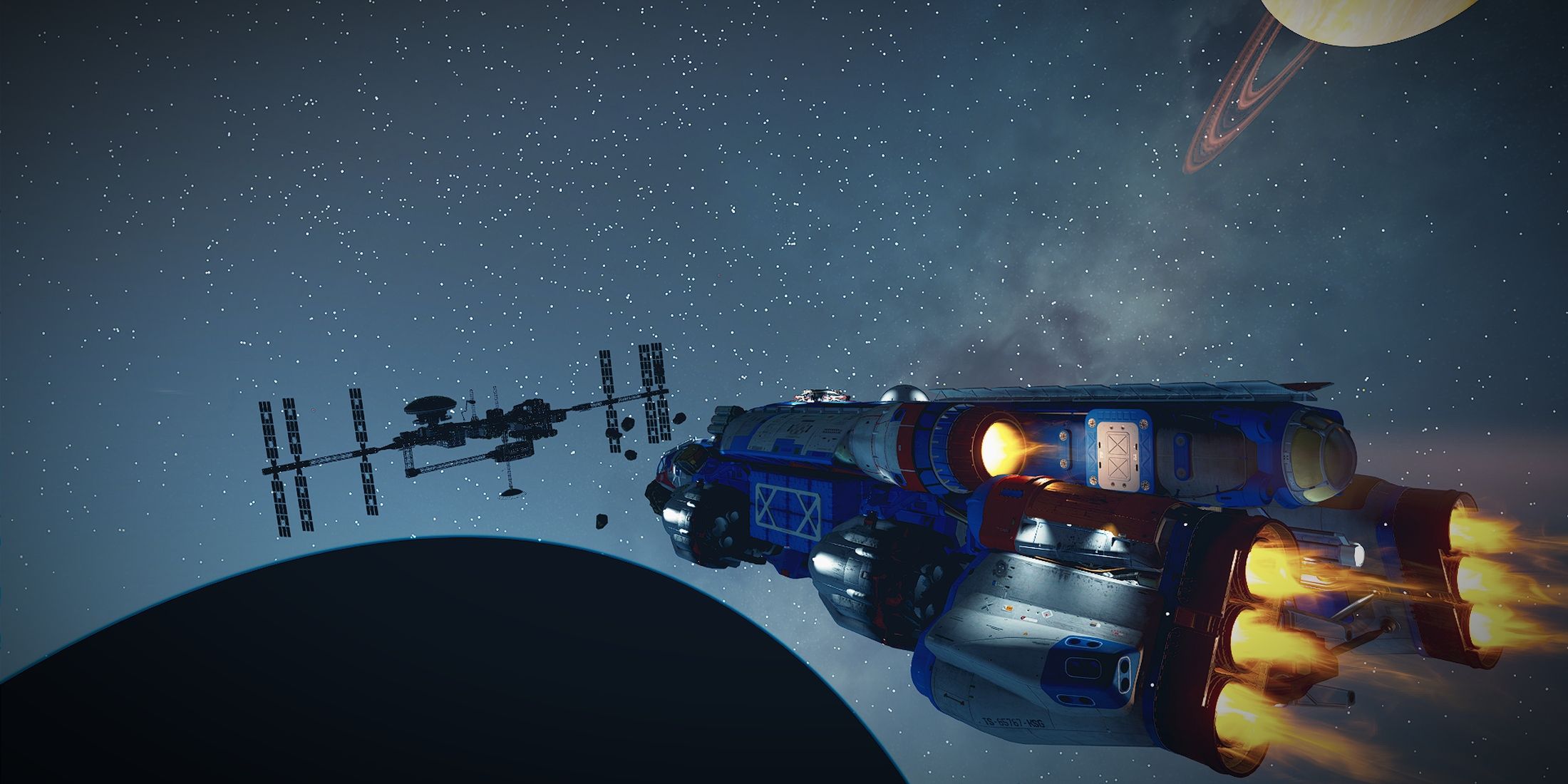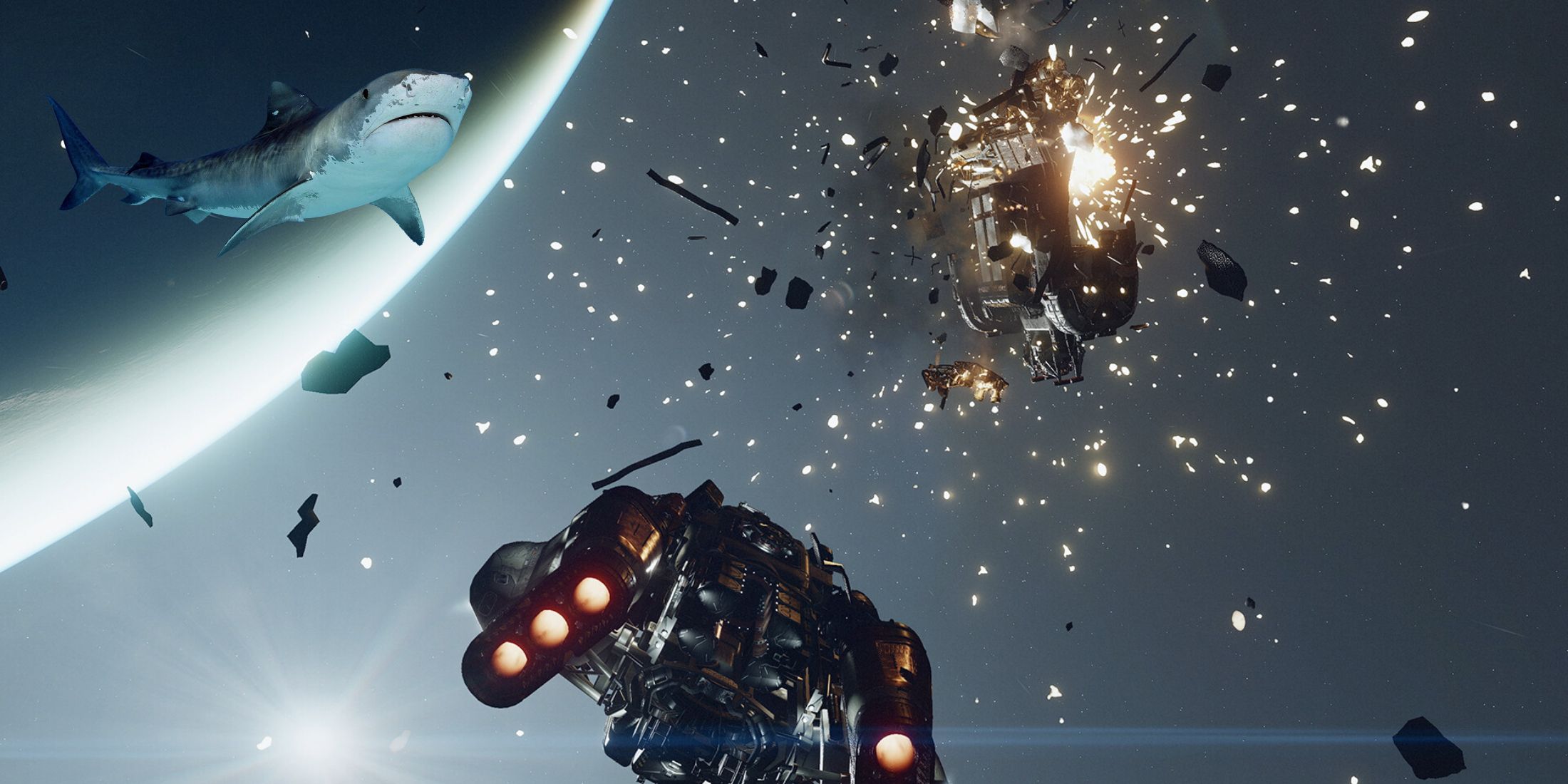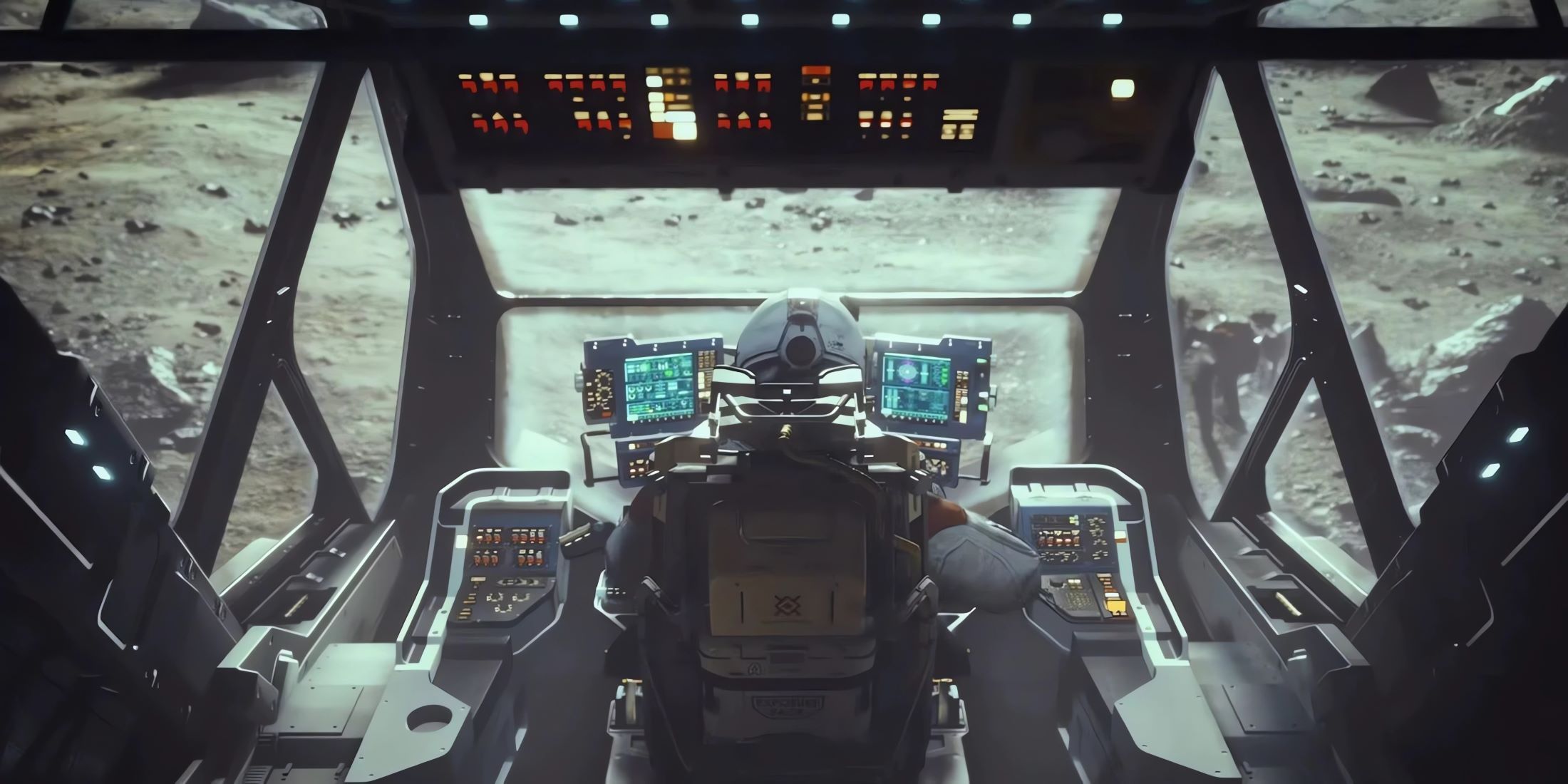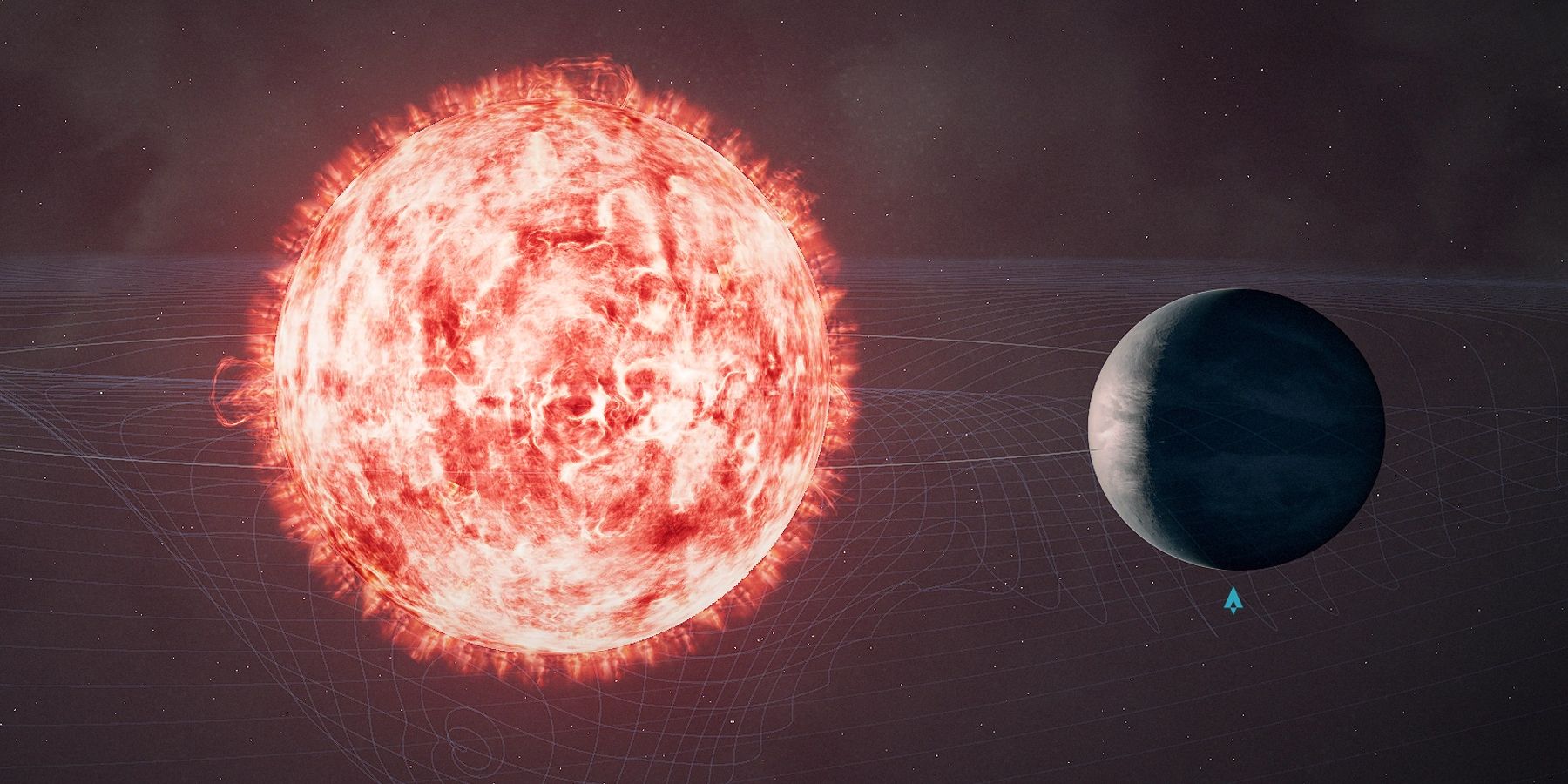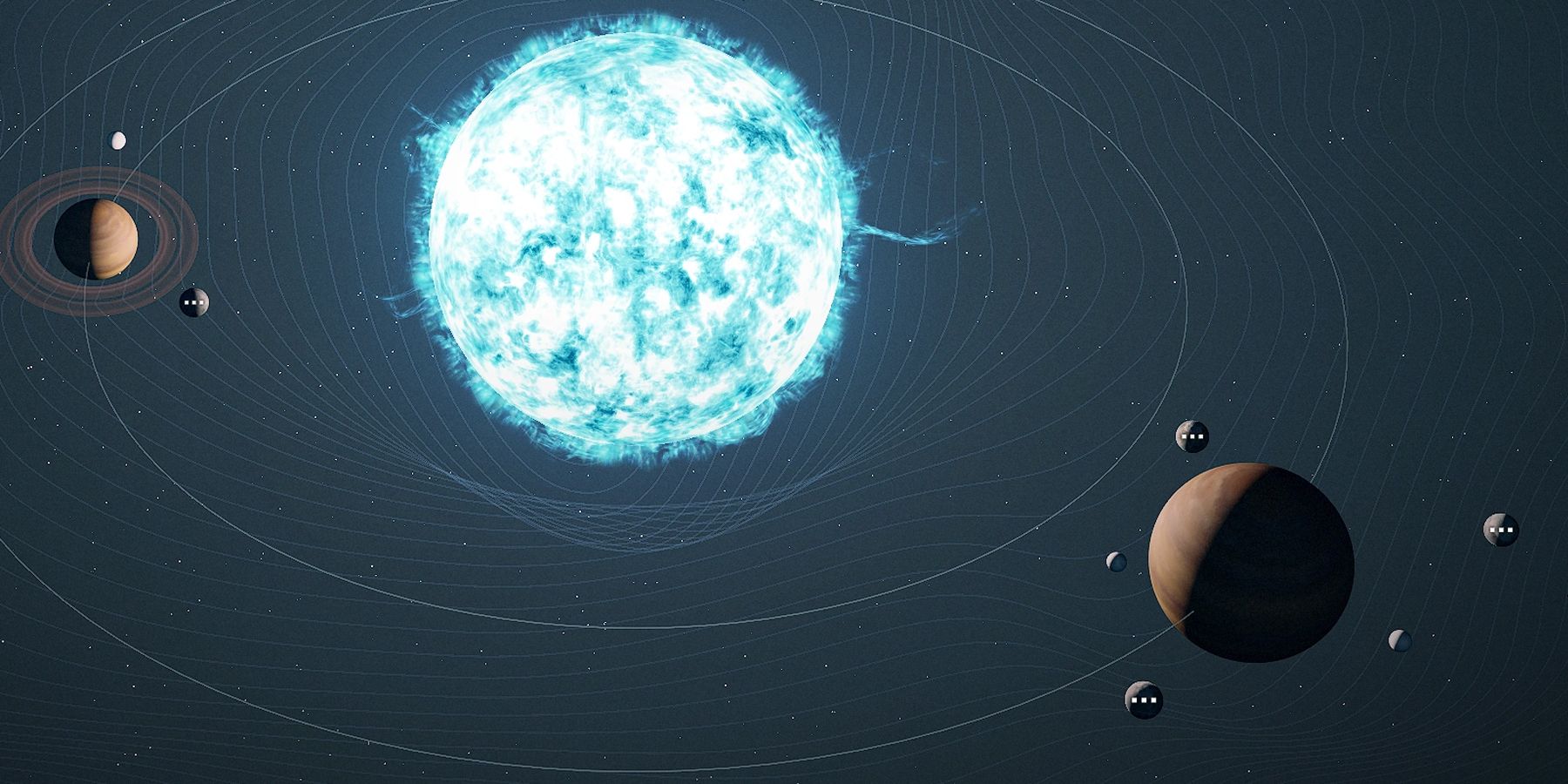Highlights
- Starfield's star systems are based on real stars within 50 light years of Earth, with some names simplified or replaced with common names.
- Twenty-eight of Starfield's 120 star systems are named after famous scientists, including Archimedes, Copernicus, Newton, and Hawking.
- The five star systems with real-world names, such as Barnard's Star and Wolf 359, are worth mentioning, but the remaining 23 are Bethesda's creations.
While most of the planets are fictional, Starfield's systems are based on real stars within 50 light years of Earth. For most of them, Bethesda either simplified their names or assigned common names to replace astronomical ones. Among the names used in Starfield, mythological characters are common, as are animals. Bethesda also named a few of Starfield's systems after people, including several famous scientists.
Twenty-eight of Starfield's 120 star systems are named after scientists. Five of them -- Bernard's Star, Kapteyn, Luyten's Star, Van Maanen's Star, and Wolf -- have that name, or a version of it, in real life. However, they are worth mentioning, if only for completeness' sake. In real life, however, Kapteyn is called Kapteyn's Star, while Wolf's official name is Wolf 359. The remaining 23 are products of Bethesda's decision-making.
1 Every Starfield System Named for a Scientist
- Al-Battani
- Archimedes
- Bardeen
- Barnard's Star
- Bessel
- Bohr
- Copernicus
- Copernicus Minor
- Fermi
- Feynman
- Foucault
- Hawking
- Heisenberg
- Huygens
- Kapteyn
- Khayyam
- Linnaeus
- Lyuten's Star
- McClure
- Newton
- Nikola
- Piazzi
- Rutherford
- Sagan
- Sakharov
- Schrodinger
- Van Maanen's Star
- Wolf
The oldest and one of the most famous is Archimedes, the Ancient Greek mathematician, inventor, and astronomer who discovered the fundamental principles of geometry and physics. Meanwhile, Al-Battani was an astronomer and mathematician from the Islamic Golden Age who laid the foundation of astronomy as a scientific discipline. He's joined by Omar Khayyam, who made key discoveries in the field of geometry.
Nicolaus Copernicus is famous for developing a heliocentric solar system model. Skipping ahead 170 years is Sir Isaac Newton, who formulated the laws of motion, built the first practical reflective telescope, helped invent calculus, and played a key role in the Scientific Revolution. Slightly earlier than Newton is Christiaan Huygens, who earned his place in Starfield's star charts by discovering Saturn's moon Titan and inventing the pendulum clock, among other things.
Astronomer Friedrich Bessel was an early astrophysicist and the first to deduce the existence of an unobserved star. Giuseppe Piazzi was the 18th-century astronomer who discovered the dwarf planet Ceres. Another of Starfield's most prominent names is Carl Sagan, an astronomer, astrophysicist, and science communicator best known for his research into the possibility of extraterrestrial life.
The five real-world star names are likewise a gaggle of astronomers. Edward Emerson Barnard, who discovered Jupiter's moon Amalthea. Willem Jacob Luyten found numerous stars, while Jacobus Kapteyn discovered the galaxy's rotation. Dutch-American astronomer Adriaan van Maanen discovered his star in 1917, and Max Wolf was the German astronomer who measured Wolf 359's motion relative to the Sun.
American physicist and engineer John Bardeen won two Nobel Prizes and invented the transistor, which led to the development of nearly all modern electronics. It's thus fair to say that Starfield literally wouldn’t exist without him. Starfield's Bohr system is named for Danish physicist Niels Bohr, who made foundational discoveries regarding atomic structure.
Starfield's Hawking comes from Steven Hawking, the British physicist who made major discoveries about gravity, black holes, and quantum mechanics. He was a major proponent of the existence of multiple universes, making his inclusion particularly appropriate given Starfield's ending. He's joined by Werner Heisenberg, who is best known for outlining the Uncertainty Principle in quantum mechanics.
Ernest Rutherford was an early 20th-century nuclear physicist who discovered the proton and helped create the modern atomic numbering system. Meanwhile, Andrei Sakharov was a Soviet physicist and human rights advocate. Many will also know Erwin Schrodinger as the Austrian-Irish physicist who created the Schrodinger's Cat thought experiment.
Enrico Fermi developed the first nuclear reactor for the Manhattan Project. However, he's likely better known for the Fermi Paradox, which questions the lack of evidence for alien life with the high likelihood of its existence. Starfield features a second Manhattan Project researcher in Richard Feynman, who made essential quantum mechanics discoveries.
Starfield's McClure system was likely named for Arctic Explorer Robert McClure, who was the first to circumnavigate the Americas. As an explorer, it's unsurprising that his name might appear in Starfield.
The Nikola system presumably gets its name from Nikola Tesla, who developed alternating current. Meanwhile, Michel Foucault was a 20th-century philosopher whose work significantly impacted psychology, sociology, anthropology, criminology, and related fields. Finally, Carl Linnaeus was an 18th-century Swedish biologist who developed the modern species classification system.
Starfield is available now on PC and Xbox Series X/S.

